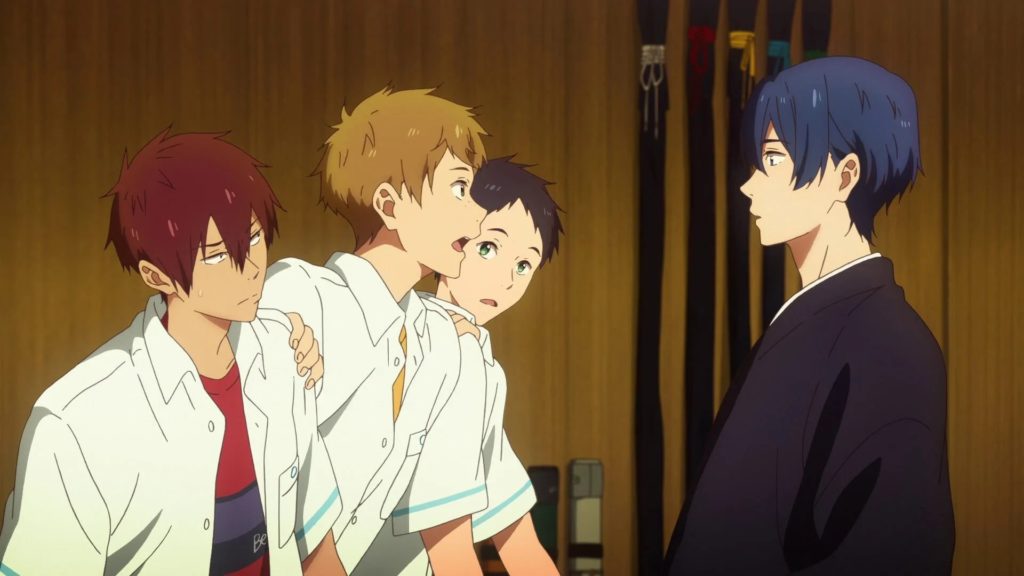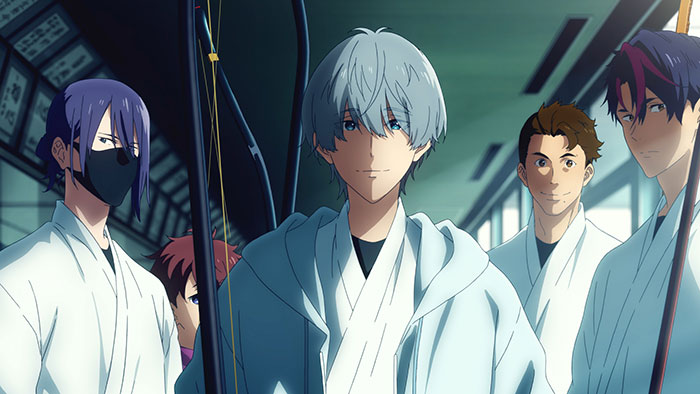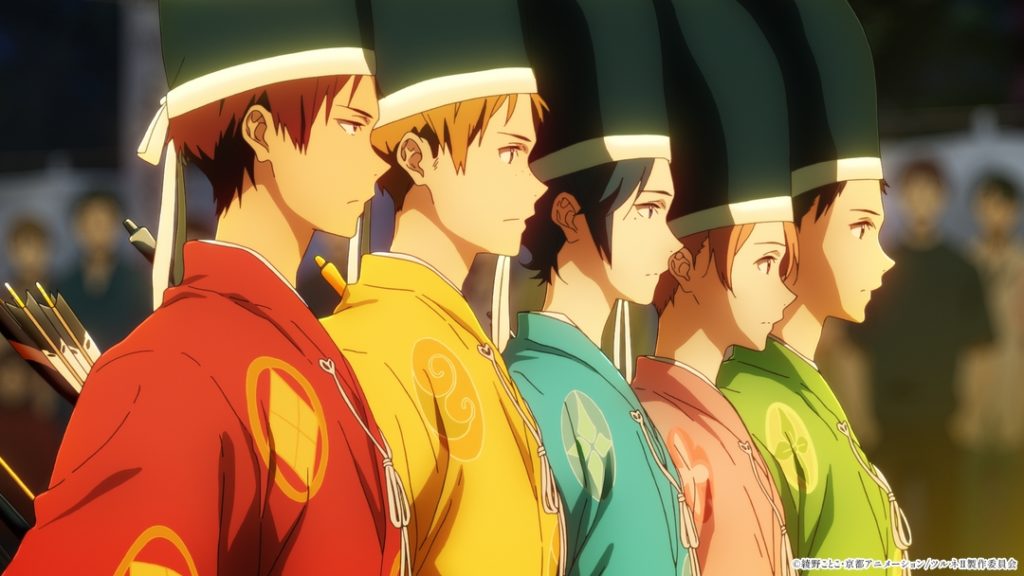Tsurune: The Linking Shot (Season 2 Episodes 1-13) Review
Having overcome his crippling target panic, high school archer Minato continues to pursue his passion for kyudo. He and his fellow team members at Kazemai High have won the prefectural tournament, coached by local Shinto priest Masa and school club adviser Mr. Tommi, and have beaten their rivals, Kirisaki High. It’s not long before they’re in competition again – but now a third high school, Tsujimine, has fielded a team and even though they shoot in an unconventional way, they’re good!

After a defeat at the next tournament, the Kazemai team realize that they will be competing against Kirisaki and newcomers Tsujimine at the upcoming nationals. It’s time to get serious. Minato has been struggling with his form, so Masa makes him put his bow aside and practise away from the shooting range which Minato finds incredibly frustrating, betraying an intriguingly rebellious side to his nature. There’s good news for the girls in the Kazemai team though as Rika, Yuna and Noa get their chance to compete in a tourney at long last!

However, it’s far from plain sailing for the boys. Cousins Kaito and Nanao have a spectacular falling-out, which shocks their fellow teammates. Ryohei, having struck up a friendship with Sae, little sister of Minato’s childhood friend Shu Fujiwara (the star of Kirisaki’s kyudo team), is surprised to find himself invited to Shu’s house. Masa suggests that they work on their ‘ikiai’ (matched breathing) to improve their synchronicity as a team – but even that doesn’t quite go as planned.

But then there’s the new rivals: Fujimine High, who have hardly any resources at all and no dojo. The five-strong team are coached by second-year Eisuke Nikaido who burns with resentment, yet is as passionate about archery in his own way as Minato is. Why is he so hostile toward Minato, Seiya – and Shu?
Kazemai High go to a beachside kyudo range for a training week, only find that they’re sharing the facilities with Tsujimine. After some awkward moments, they settle into a routine of sharing the cookery as well as the time practising and get to know each other better, even though that leads to some uncomfortable, even painful confrontations with Nikaido. How will this affect the outcome at nationals?
Tsurune – The Linking Shot (directed again by Takuya Yamamura) is the long-awaited sequel to the 2018 KyoAni series about high school students forming a kyudo club and going on to compete against other schools. It looks wonderful, suffused with KyoAni’s unique look, both in character design and settings – and, based on novels by Kotoko Ayano, the characterization is convincing and compelling. ‘Tsurune’: the sound of the arrow leaving the bow resonates throughout the second season, as the first. It’s what attracted Minato to kyudo when he was very young; it’s the sound that brought him back to kyudo when he heard Masa practising and it still permeates the episodes, like a recurrent motif in a piece of music. This slice-of-life drama moves at a measured pace yet holds our attention because we’ve been introduced to most of the characters and have come to care about them. And as for the unconventional archers of Tsujimine High, they’re fascinating to follow as they challenge the other archers into questioning what they do when they draw their bows – and why.

Even though I’m not always a fan of dubs, the US dub for Season 1 of Tsurune turned out to be one of the better ones (Sentai) and a very pleasant surprise – so it’s a little disappointing to note that Season 2 comes only with the original Japanese voice cast and subtitles, unlike most of KyoAni’s other titles. Perhaps a dub will follow in due course…
The original Japanese cast are, as before, very much at home in their roles, with the addition of the new kyudo team from Tsujimine High bringing new actors to the series, notably Jun Fukuyama as Eisuke Nikaido, radiating barely suppressed resentment – before revealing a vulnerable side later on.
The music for the series is by Masaru Yokoyama, who also scored the movie (available to watch on HIDIVE), taking over from the composer for the first series, Harumi Fuuki. The music is used sparingly and to great effect; it’s so refreshing to have a series these days in which there isn’t constant background music of inferior quality droning on. The stirring Opening Theme “℃/Shirushi [Tsurune-ban]” is again by Luck Life (they provided the OP for Season 1) and it’s infused with optimism to match the animation. The Ending Theme is “Hitominaka” by Tei.
This box-set comes to the UK thanks to MVM, but unlike the Collector’s Edition of Season 1, there are no physical extras and the only extras on Disc 2 are the textless OP and ED. The subtitles are in yellow which means they read well. (Although ‘I’m trynna’ really grates; we Brits can put up with ‘gonna’ and ‘wanna’ if we must but this is a bridge too far!)

The second series of Tsurune doesn’t disappoint; far from it, as it builds on the strengths of the first with some engaging character interactions. And in the competition scenes, the animation is at its most imaginative, depicting the archery range as if flooded with water and the ripples that spread outward as each competitor takes aim and looses their arrows. This, combined with the very effective use of sound – and silence – brings an added tension to the matches, as well as creating some of the most beautiful animation I’ve seen in a long while. The art – and the people – of Tsurune will stay with you long after you’ve finished watching.
Our review copy was provided by MVM Entertainment.


